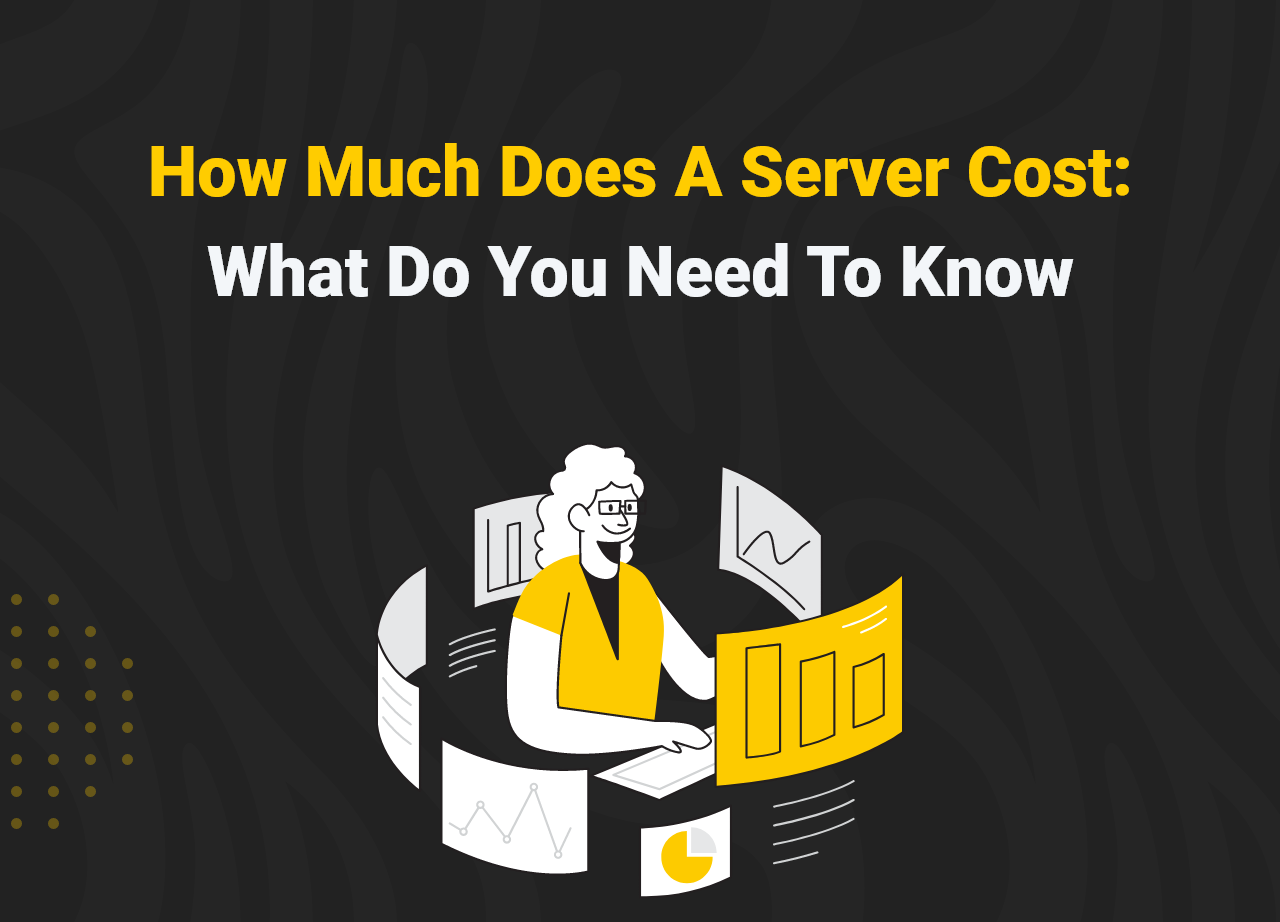How Much Does A Server Cost: All You Need To Know
Suppose you are constructing a home server, a personal server, or a company server. In that case, you’ll almost certainly begin by wondering how much it costs to create a server. When it comes to the cost of how to create a server, there is no hard and fast estimate we can tell you. Before you begin, you must define your server requirements, specs, and target budget.
Servers employ customised operating systems that are intended to accommodate many users. Additionally, technology is designed to handle multi-user applications such as messaging, print servers, and emails.
The same servers operate customer relationship software, database software, resource planning software, and scheduling systems.
A server is a device that links people, hardware, and software in an information technology system. This post will look at how much a service will cost. We’ll concentrate on the expenses and procedures associated with employing servers.
What Are Servers Used For?
The computer that provides information or services to the other computer is the server. The networks rely on one another to exchange information and services. These are usually seen in tiny workplaces or households. Business servers are configured to do specific tasks. These are determined by the company’s nature, size, and scope. So, if you want to grasp the cost of the business server you desire, think about what it will do.
Application Hosting
Application hosting enables you to execute your applications on servers or in a cloud-hosted by a service provider, such as Amazon Web Services (AWS) or Google Cloud Platform (GCP), which offer the foundations for bitcoin hosting your apps.
Email Hosting
Email hosting is a service that stores all of your email messages and associated files on a server. When you receive an email addressed to your website’s domain address, it is routed via the internet and stored on the recipient’s server.
File Storage/Sharing
A file server (or fileserver) in computing is a computer connected to a network that provides a location for shared disc access, i.e. storage of computer files (such as text, image, sound, and video) that can be accessed by workstations that can reach the computer that shares the access through a computer.
Windows Domain Controllers
A domain controller is a server that responds to authentication requests and verifies users on computer networks. Domains are a hierarchical way of organising users and computers that work together on the same network. The domain controller keeps all of that data organized and secured.
Printer Servers
A home office where a stay-at-home parent manages their business is an example of a print server in operation. The entrepreneur is likely to have a print server connected to their printer, allowing access to the workplace printer from any computer in the house.
How Should You Choose Your Type Of Server?
Which server is best suited to your small business will depend on several factors. It doesn’t have to be this complicated. It turns out there are just four things to really consider when choosing a small business server.
A server that can support up to 15 users, for example, is likely to be sufficient for most start-ups; however, if your business grows beyond this, then you may need to consider a different type.
These are the factors you must keep in mind;
- Storage Or Capacity
This relates to the amount of disc space available as well as the type of central processing unit (CPU), and random-access memory (RAM) used (RAM).
- Number of users
While you’ll probably just have a few individuals utilising the server at first, as your company expands, you’ll need a server that can handle more users.
- Store
Many small firms that employ a tower server will keep it as a PC or workstation, taking up very little floor space.
- Blade Server
These appear to be colossal Tower or Rack Server. However, they really contain several servers in a single chassis, and these provide much more storage capacity and performance. Blade server expenses have a high initial outlay, but they decrease with each extra node you install.
How Much Does A Server Cost: What Do You Need To Know
Now let’s get down with our main event and learn about how much you may have to spend.
Step 1: Hardware costs
While it’s impossible to offer an exact figure because there are so many things to consider when choosing a server, such as the hardware cost and the kind of server, we’ll do our best to give you a ballpark figure.
The cost will be influenced by how the server is built. Solid-state drives (SSDs) are more costly since they have fewer moving parts and are faster and more reliable. Mechanical hard drives (HDD) are a less expensive alternative.
A comparable server with ServerMania would cost $185/month. However, this pricing includes the ability to upgrade to a new server anytime your needs change without incurring any upfront hardware expenditures. It also covers all expenditures associated with electricity, cooling, networking, and support.
Step 2: Software Costs
When evaluating server expenses, another item to consider is software expenditures. For those wishing to deploy Windows Server on their own, this can be rather costly. With each of our leased servers, ServerMania provides a monthly licensing cost that is adjustable.
Operating system
- Windows Server OS – $500 – $4,000 per server
- Linux – free
Once you’ve arranged your approach, installing your server is quite simple. After you’ve connected the devices, run the installation programme and follow the instructions.
Setting up a local admin for each device on your server network is the final step in the procedure. It will also include any connected devices, such as printers, which will connect directly to printing servers. Sort the data applications and upload their data resources with specialist software such as CRMs, ERPs, and accounting software.
Step 3: Building and Maintenance
Each month, you’ll need three to five hours of maintenance services. Upkeep is necessary to guarantee that the programme runs smoothly. As a result, the monthly charge for server monitoring and upkeep is between $150 and $300.
An IT professional’s hourly rate is typically approximately $100. We’re talking about $400-$500 here, assuming a server installation takes 4-5 hours. This is just an estimate, not a precise figure.
Step 4: Customer support and contingency plan costs
This might include initial setup assistance or continuing support as needed. Consider the times of day and the mode (live chat, email, or phone) in which it is offered. Check which time zones your support team is in and, if feasible, what their usual response times are.
Governments and corporations frequently create contingency plans. Assume a group of employees from a corporation travels together on a plane that crashes, killing everyone on board. A loss of this magnitude might put the firm under serious difficulty, if not ruin it.
Data should be kept on many servers in various locations. You could, for example, utilise a physical server while also backing up data to the cloud. In the event of damage to your facilities or a breach in cyber security, backup data should be stored off-site or on a different server.
FAQ
- Question: Can I repair Google Chrome?
Answer: A application or procedure that is presently executing on your computer may be interfering with Chrome. You might try restarting your computer to see if it solves the problem. Chrome may be uninstalled and reinstalled to resolve issues with your search engine, pop-ups, updates, or other issues that may have stopped Chrome from launching.
- Question: How do I know if Chrome is blocking antivirus?
Answer: If you’re wondering how to see if your antivirus is blocking Chrome, the procedure is identical. Open your preferred antivirus program and look for an authorised list or exception list. You should include Google Chrome in that list as well. After that, double-check to see whether Google Chrome is still prohibited by your firewall.
- Question: Why can I not uninstall Google Chrome?
Answer: If you still can’t remove Chrome, look for any Chrome processes running and terminate any that you discover. Simply right-click the first chrome process in the list and select End job. Repeat until all other Chrome processes have been terminated.
- Question: What Does Err_spdy_inadequate_transport_security Mean?
Answer: The ERR_SPDY insufficient transport security Chrome issue might occur while browsing sites hosted on IIS 10. Some Chrome users on Windows Server reported receiving an ineffective transport security notice. One of the most apparent methods to avoid this problem is to use a different browser.





